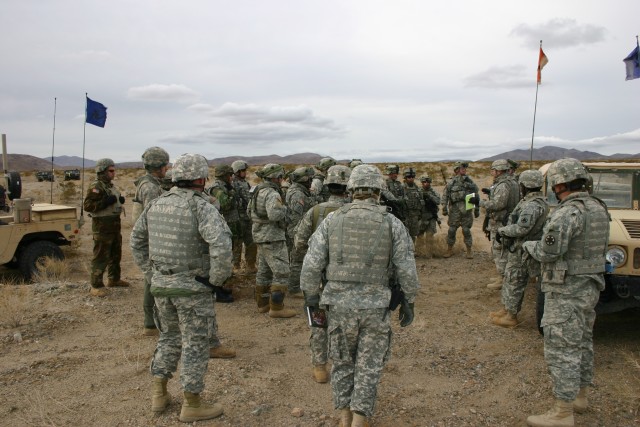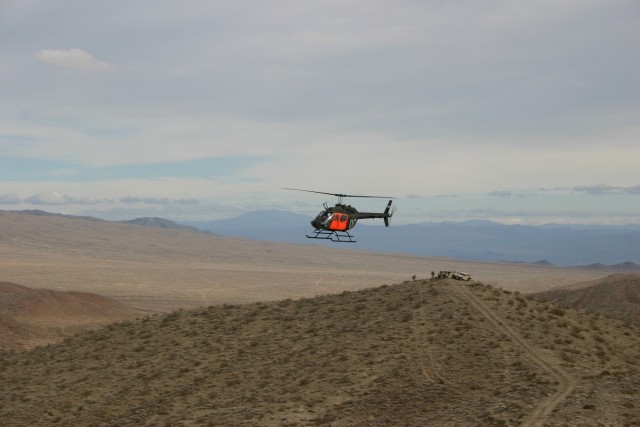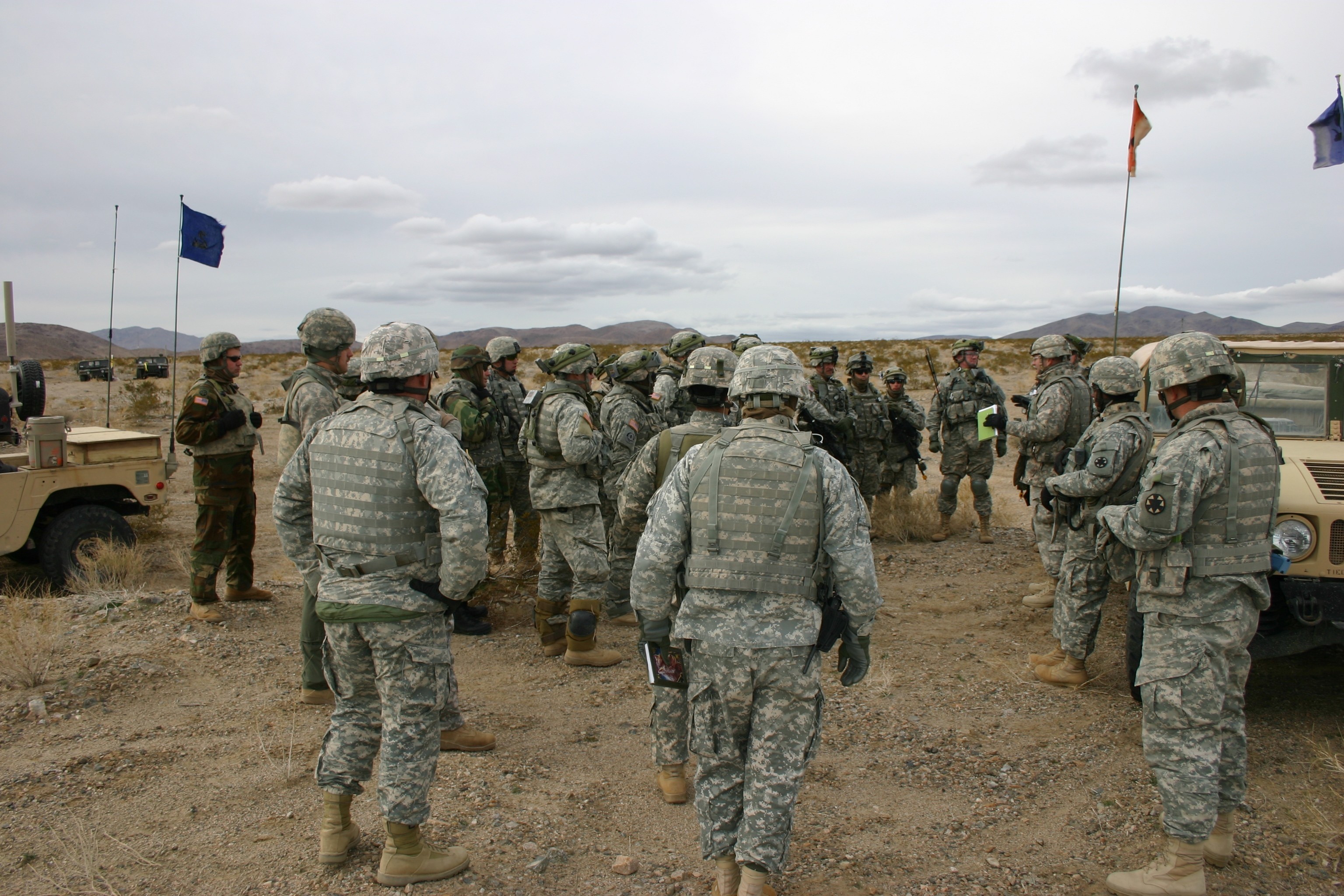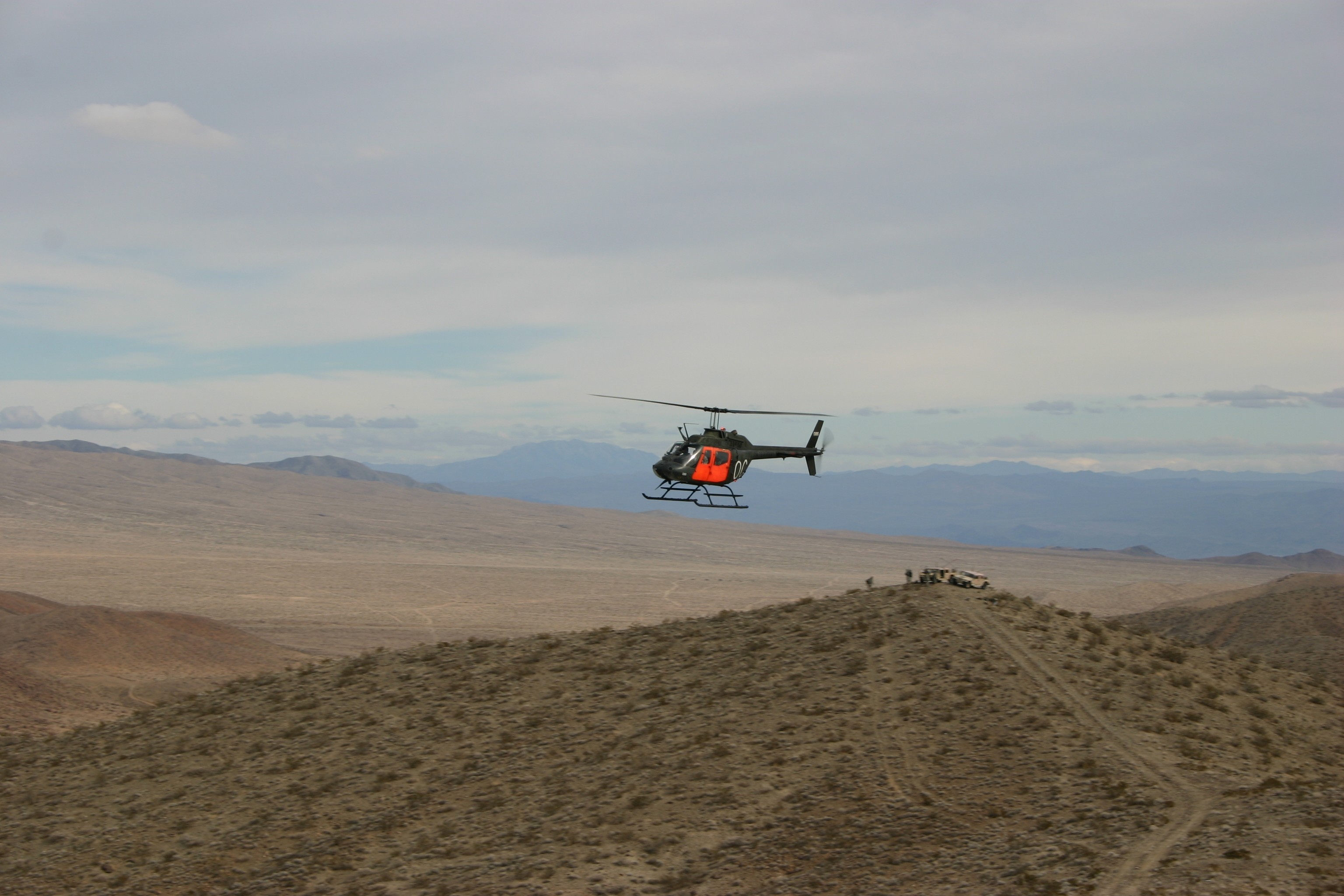FORT IRWIN, Calif., (Army News Service, Feb. 19, 2008) - The National Training Center has made significant progress in integrating the Navy's Joint Task Force Exercise as part of the joint training available to warfighters who train here at the Army's largest maneuver combat training center according to Navy Cmdr. Mike Tatsch, Joint Improvised Explosive Device Defeat Organization, Air Force Center of Excellence.
The NTC successfully integrated Navy airplanes from Carrier Air Wing Two in 3rd Fleet Command's JTFEX with NTC during the most recent Army rotation from the Ft. Hood, Texas-based 3rd Brigade Combat Team, 1st Infantry Division.
"NTC's ability to integrate the Navy's JTFEX will be the springboard of things to come," said Tatsch. "When we integrate and synchronize assets from two very successful exercises, we create more synergistic training opportunities and everyone wins."
This initiative is led by the Operations Group at NTC and supported by JIEDDO and U.S. Joint Forces Command's Joint Fires Integration and Interoperability Team.
NTC has been looking for innovative ways to link other service training exercises with Army BCT training rotations. "We've learned when we come together as a team and focus on crucial joint training requirements, we can help each other accomplish multiple service training objectives," said Army Lt. Col. Brad Stewart, chief of plans and operations, Operations Group, NTC.
Part of the integration process involves bringing in a variety of joint intelligence, surveillance, and reconnaissance assets to benefit the training of all services.
"NTC, JIEDDO, JFIIT and the services are working together to facilitate Joint training opportunities," said Thomas Brumfield, JISR subject matter expert for JFIIT. "In the past, services would go to a service-specific training venue and think they were training aids for the other service.
"Today, the NTC and other venues see it as a mutually beneficial training partnership where all services gain from the opportunity to work together just like they will when they deploy in combat," he said.
For exercise participants, bringing in assets like the Air Force Rivet Joint aircraft to the NTC provided a unique joint training experience.
"This is the first time that Rivet Joint has integrated airborne signals intelligence in direct support of a maneuver commander at a CTC, with the aircraft actually tasked to provide mission-essential SIGINT to the ground forces they're supporting," said Air Force Master Sgt. Joel House, Rivet Joint operator at JFIIT. "This training provides opportunities for electronic warfare operators from both the Army and Air Force to train together prior to their deployment in theater. NTC is the only venue where you can train with such a unique group of joint assets in such a realistic and demanding environment."
According to Stewart, the fusing of joint assets at NTC will continue for the foreseeable future and the services have been positive with their feedback.
"NTC has gone the extra mile to get the Navy and Air Force integrated with an Army BCT training rotation, and we look forward to integrating Marine Corps assets, as well," said Tatsch. "The units and services training here get to work together as a Joint team - real-world units training with the same or similar assets that they'll be working with in theater. By teaching them these processes before they deploy, they'll be miles ahead when they arrive in the combat zone."
(Casey Bain serves with U.S. Joint Forces Command Public Affairs.)




Social Sharing